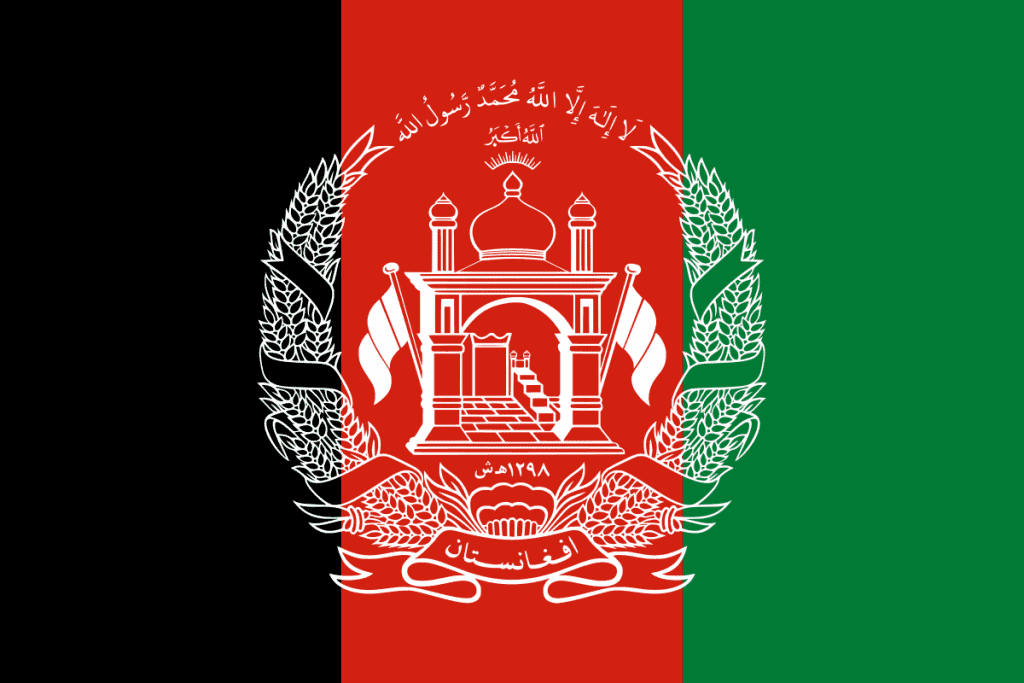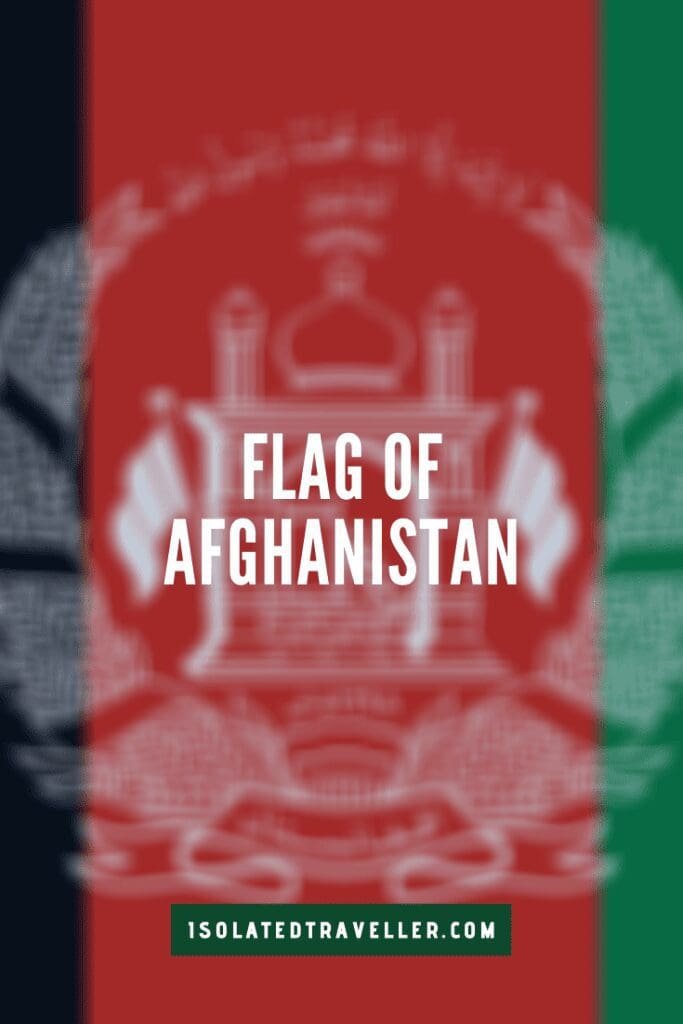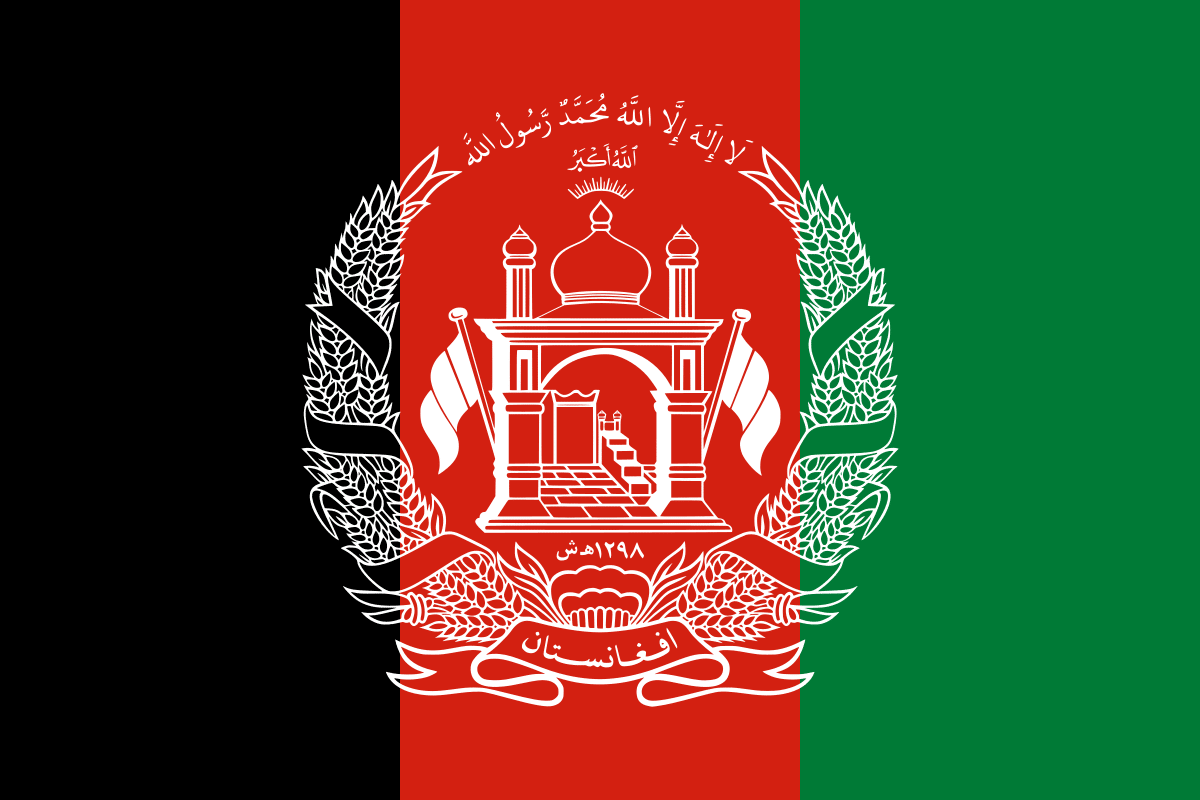Flag of Afghanistan
The national flag of Afghanistan consists of three equal vertical bands black, red, and green. In the centre of the flag is an emblem which consists of a masjid with a flag on each side. The year 1298 is written on a scroll.
The year 1919 is when Afghanistan obtained control over its foreign affairs from the British Empire. Underneath the date is the name “Afghanistan” written in Dari.
The central image is circled by sheaves of wheat, representing fertility. Top of the emblem is the phrase “Allahu Akbar” in Arabic, and slightly above that are rays of sun leading up to the Islamic Declaration of Faith or “Shahada”: “There is no deity but God, and Mohammad is the messenger of God”.

Flag Design and Colour Scheme
The Flag consists of a vertical tricolour with the classical National Emblem in the centre. The current flag was adopted on August 19, 2013.
- The black colour represents the dark past when its foreign policy was under the control of the British Empire.
- The red represents the bloodshed for Independence.
- The green colour represents hope and a prosperous Islamic future.
- The centre emblem is the classical emblem of Afghanistan with a mosque with its mihrab facing Mecca.
Additional information: some have alternatively interpreted the black to represent history, the red to represent progress, and the green to represent either agricultural prosperity or Islam.
History of the Flag of Afghanistan
Afghanistan has had 25 flags since the first flag when the Hotak dynasty was established in 1709. During the 20th century alone, Afghanistan went through 18 national flags, more than any other country during that time.
The majority of the flags used by the nation feature the colours of black, red and green, including the current flag used today.
Afghanistan Flag Timeline of Changes
During the 20th century, Afghanistan witnessed several political changes that were reflected in its flags.
King Amanullah declared the Kingdom of Afghanistan in 1926 and introduced a new flag with a wreath, replacing the octagram. However, political unrest led to the rise of new rulers, and the flag changed accordingly.
In 1929, Habibullah Kalakani became the ruler, and the flag resembled a tricolour flown by invading Mongol forces in the 13th century.
After several transitions, including the reign of King Zahir Shah, the communist coup in 1978, and the Taliban regime, the flag of Afghanistan went through significant transformations.
The table below provides a timeline of the changes in the Afghan flag during the 20th century:
| Year | Description |
| 1926 | Wreathed flag with a mosque and mihrab |
| 1929 | Flag with the removal of the dynastic date |
| 1973 | Current flag with the modified coat of arms |
| 1974 | Flag with changed orientation and eagle design |
| 1978 | Red flag with “Khalq” surrounded by wheat |
| 1980 | lag with a sun rising over a mihrab and wheat wreath |
| 1992 | Flag resembling flags of other Muslim countries |
| 1996 | White flag with Shahada written in black |
| 2002 | The current flag with the modified coat of arms |
Frequently Asked Questions
Why has Afghanistan changed its flag so many times?
Afghanistan has undergone numerous political changes throughout its history.
Each change in government or regime often led to a new flag representing the values and ideologies of the ruling power.
Political upheavals, power shifts, and changes in national identity have contributed to the frequent changes in the Afghan flag.
How is the flag of Afghanistan perceived internationally?
The flag of Afghanistan is recognized internationally as the official flag of the country. It represents the sovereignty of Afghanistan and is respected as a symbol of national identity and unity.
The flag is an important diplomatic symbol and signifies Afghanistan’s presence in the global community.
Are there any legal restrictions on the use of the Afghan flag?
There are legal restrictions on the use of the Afghan flag, as it is considered a national symbol.
The flag is a protected symbol of national identity and should be treated with respect.
There are guidelines on flag etiquette that should be followed to honour the flag’s significance and symbolism.


